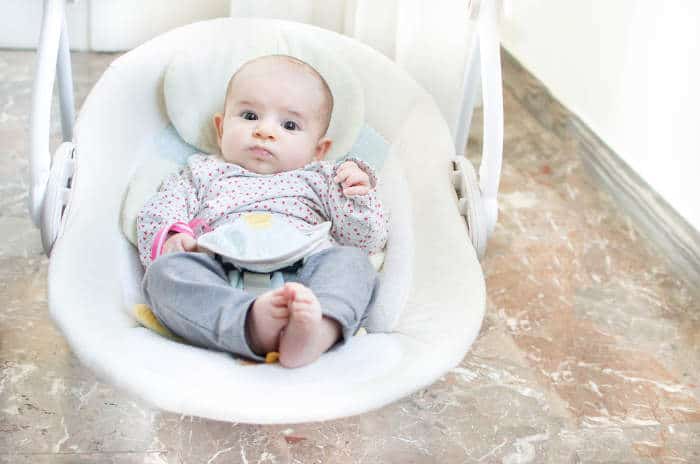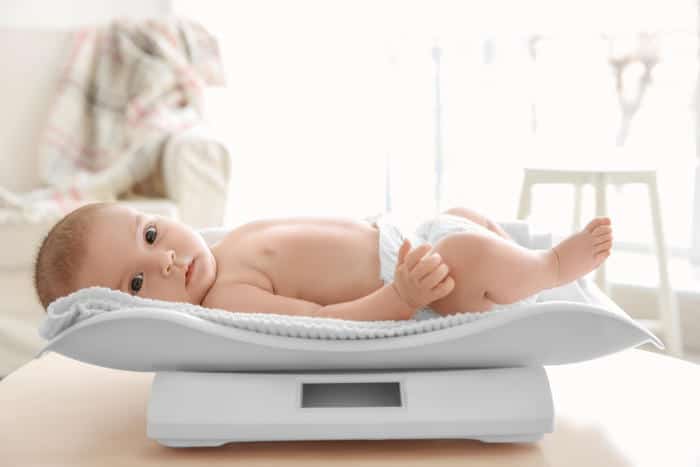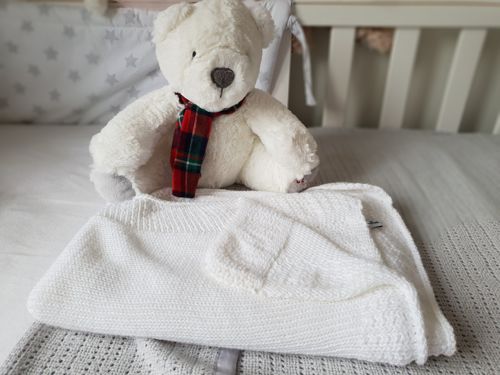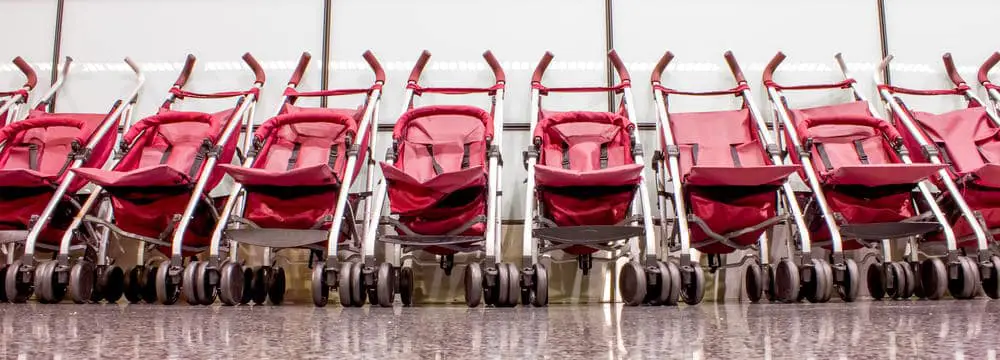Baby swings are one of those things that almost feel like buying a car when you get one. You look over all the bells and whistles and spend quite the pretty penny when you finally decide on one. They’re undeniably useful for the first few months when you need a quick break, and for babies that suffer from evening colic and reflux, they’re complete lifesavers.
Unfortunately, you won’t be able to use your swing nearly as long as whatever nice, sensible sedan or minivan you purchase. That’s because, in the blink of an eye, your cooing newborn is rolling, kicking, and trying their hardest to get moving. By that time, you’ll need to retire the swing for safety.
Don’t worry though! We’ve gone over the basics of safe use and when/how to ditch the swing when it’s time. If you’re in the throes of weaning from the swing, or just anticipate the need to do so, have a look before diving in.
How long should a baby stay in a swing?
In terms of an individual session, swings are only meant for short stretches of time (think 30 minutes or so while you do the dishes). Many veteran parents will tell you that 30 minutes in a swing after nursing or a bottle can work wonders for babies with reflux or gas.
While using, keep an eye on their breathing and make sure their chin isn’t tucked into their chest too much. Unfortunately, there are stories of babies losing their airways in swings and car seats from positional asphyxiation. It’s horrible, tragic, and completely preventable if you are cautious in your use of swings.

Is it safe for babies to sleep in a baby swing?
Supervised naps throughout the day are generally safe for the swing. However, experts recommend moving them to a flat surface for sleeping at night. There may be instances when pediatricians recommend sleeping in a propped position for gastrointestinal discomfort, but that’s best to hear from a physician that knows safety standards and your child’s particular concerns.
There are, however, new swings on the market that lay flat and convert to a bassinet. These are similar to other traditional bassinets on the market and are probably okay for overnight sleep. When purchasing, be sure they lay completely flat, the sides are breathable mesh, and do not use when your baby starts pulling up or climbing.
Check the age range
Swings will normally give you an appropriate baby swing age limit in their specifications. However, if you’re worried about the appropriate age range for using a baby swing, look for your baby to be done with it around 9 months. That’s a rough estimate. All kids are different and they may start trying to climb out before or after that benchmark.
It’s dangerous to keep using the swing when your baby starts climbing and rolling because they may wiggle themselves into positions that can suffocate them or cause them to tumble out of the swing. Always keep an eye out for safety recalls and stop using it if your particular model is flagged for safety concerns.
Be wary of the weight limits
The average weight limits for most baby swings ranges from 25-30 lbs. Infants can use a baby swing immediately after birth (when used safely). You can expect your baby to reach the max weight limit of around 15+ months (a rough estimate that varies slightly between boys and girls). However, your infant will probably age out of their swing because of developmental milestones before you reach the max weight limit.
How can I wean my baby off a baby swing
If you only use the swing a few times a day and don’t lean on it when it comes to bedtime or nap time, this probably won’t be an issue for you. However, if you’ve accidentally given your baby a sleep crutch, taking the swing away will sting a little. Also, try not to feel bad about having the crutch. The newborn stage is hard but especially hard for infants that have colic, reflux, or other discomforts.
To wean from the swing, you need to establish new sleep cues. Try to put your baby in the swing awake before you dive into the weaning business. Don’t lull them to sleep and then sneak them into the swing. Put them down fully awake.
Now onto the new sleep cues, or reintroduction of the ones that fell by the wayside when the swing came to the rescue. That includes a tight swaddle, white noise, a pacifier, pats from mom or dad, etc. It’s usually easier to transition to the crib for nighttime sleep first. After that, you can work on cutting the swing from naps too.
Other helpful ways to lessen the stress for you and your baby include positioning the baby swing next to the crib, slowing the swing speed during use, and using the swing while it’s completely still until your baby no longer relies on the motion to fall asleep.









